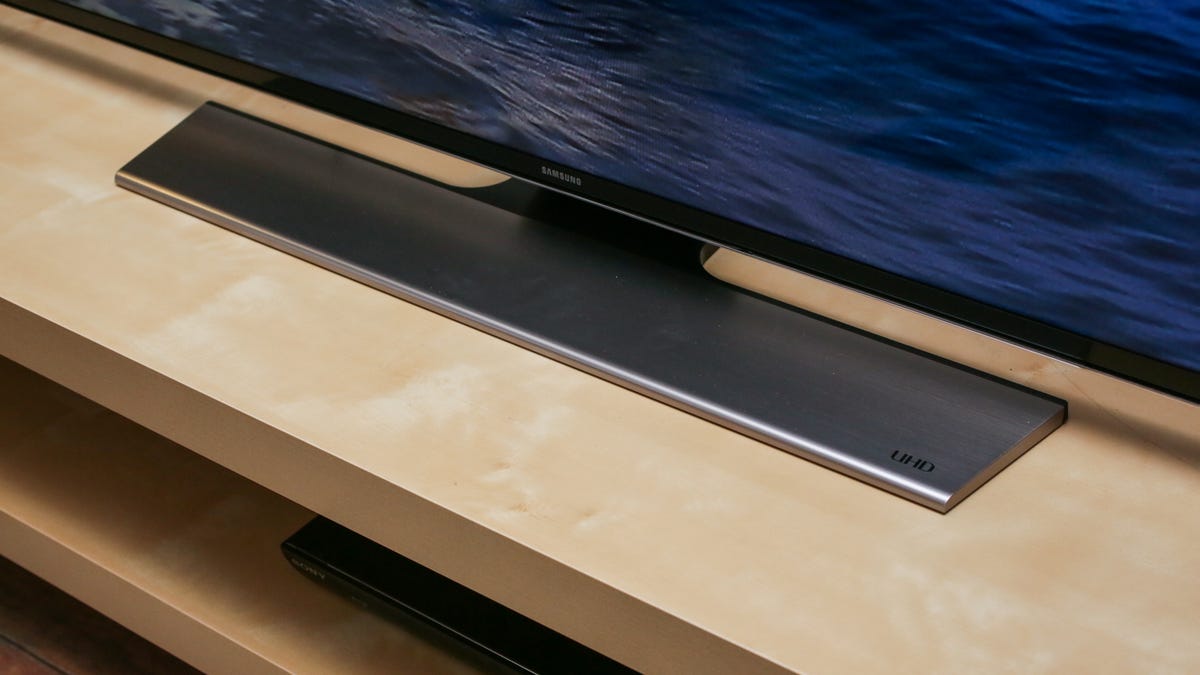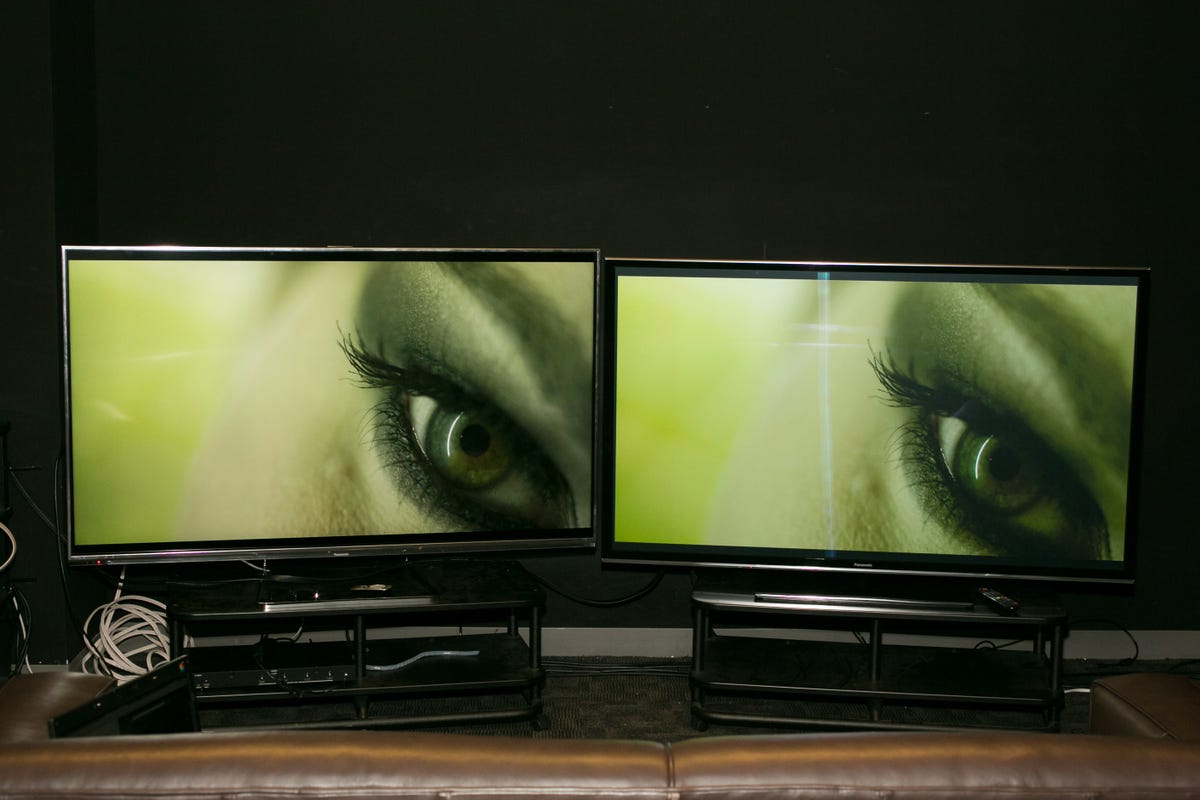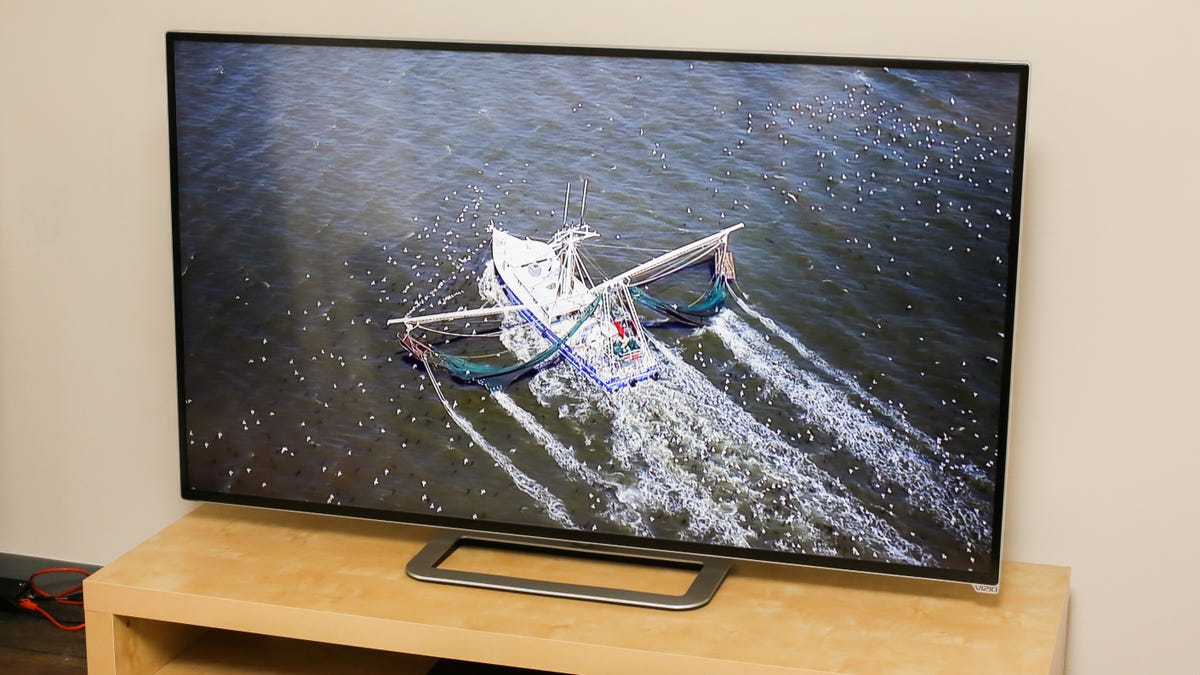
Sarah Tew
The TV buying season, a.k.a. “holiday price cuts,” is officially upon us. This year the big question facing TV shoppers is whether to spend the extra dough to step up to a 4K TV.
The quick and dirty answer is “Not unless you’re buying a high-end TV anyway.”
As usual in the TV market, complexity, obfuscation and marketing hype abounds. No TV maker or store clerk is going to tell you 4K isn’t worth it, and they’ll use slow-moving, high-quality demo material, unrealistically close viewing distances, rigged comparisons and other tricks to convince you to spend more.
Meanwhile, issues of future-proofing, the arrival of actual 4K content, and use cases (for example, whether you’ll hook it up to a PC) complicate the decision for even the savviest of buyers. I’ll try to untangle some of those complications now.
Why 4K usually isn’t worth the extra money
Here’s a concrete if unrealistic hypothetical. Given two 50-inch TVs, one with 4K resolution for $999 and one with standard 1080p resolution for $899, and otherwise identical picture quality between the two, I’d recommend the 1080p TV pretty much every time.
The reason is because a TV’s 4K resolution provides almost no visible benefit at normal seating distances (6 feet away and further) and screen sizes (up to, say, 70 inches). I know this from numerous painstaking side-by-side comparisons conducted at relatively close distances on big TVs, available in reviews like these .


Sarah Tew/CNET
At CNET we’ve been explaining why for years. It boils down to the fact that at living room seating distances most viewers don’t have the visual acuity to appreciate the extra sharpness of 4K over 1080p, even given perfect program material that doesn’t move much. Here’s a great calculator, based on such perfect material, that tells you at what distances and screen sizes certain TV resolutions become appreciable.
Now that I reviewed a bunch of 4K TVs, I can tell you nothing’s changed. The improvement in detail from 1080p to 4K is negligible, and 4K TVs don’t make 1080p material look any better.
When a 4K TV can be worth the extra money
You’ll notice I specified “otherwise identical picture quality” in the example above. In today’s market TV makers reserve their best LCD TV picture quality enhancements–ones that actually make a significant visual difference–for 4K TVs.
In other words, the best LCD TVs just happen to be 4K TVs, but for reasons that have nothing to do with resolution.
Take the most popular TV brand worldwide, Samsung. In the US they sell a bunch of 1080p and 4K TVs, but the only non- curved TV with mechanical local dimming–a picture quality enhancement that actually makes a significant difference–is the 4K HU8550 series. It’s an excellent performer that just happens to be 4K, and if you’re in its high price range, it’s a good choice that outperforms any 1080p LCD we’ve tested this year.
On the other hand Samsung’s F8500 plasma is an even better choice, with a lower price and better picture quality despite lacking 4K. Get it while you can.


Now playing:
Watch this:
What is 4K?
2:27
The other major 4K TV caveat is for people who who sit closer than six feet or so to the screen. Those of you — especially those planning to use their 4K sets as big PC monitors– are the exception to rule. The extra resolution of 4K might well be worth it, especially if you’re running a hot rod PC with the latest and greatest 4K-capable video card. Games and graphics show the benefits of that extra resolution more readily than other video content.
When a 4K TV bargain isn’t
Most TV buyers just want the best picture possible for their money. This year, the winners in our “value” category have been Vizios.
The company’s M series and E series TVs both offer great picture quality for the buck. Both are 1080p TVs that use local dimming. The M series is a slightly better performer in our tests, but both were very good and–I’d wager–most buyers will be thrilled by their picture quality despite their bargain prices.
I expected even better quality from 4K Vizio P series but that didn’t happen. This holiday season it’s going to be deeply discounted (along with many other TVs) and will likely be among the least-expensive 4K TVs available. But it’s still likely to cost more than the M series (below), which is actually the better performer.


Sarah Tew
But wait, you say. Maybe Vizio will release a software update for the P series and improve its picture quality. Maybe, but I haven’t been told that’s actually happening, and until it does (and is proven to work) I’m still recommending the E and M series over the P.
Beyond Vizio, other TV makers are offering cheaper 4K TVs. I haven’t reviewed most of them, but I still feel pretty confident saying they won’t offer significantly better picture quality than any good LCD.
Lack of 4K content, false fear of obsolescence
TVs last a long time, so you might be wondering whether that 1080p TV just I recommended buying will be obsolete in five or ten years. It won’t.
The only thing that would make a 1080p TV bought today obsolete is the widespread availability of 4K content it couldn’t play.
Today that content is limited to a few streams from Netflix and Amazon, as well as a single expensive player (with expensive content) from Sony. The Xbox One and PS4 don’t handle 4K, there are no 4K Blu-rays or TV channels, and it will still take many years for TV broadcasters and producers to replace all their HD equipment with 4K cameras and gear.
When they do, there’s no guarantee those broadcasts actually look better than their HD equivalents. Even today, HD channels vary widely in quality, mainly because of bandwidth constraints, not resolution differences. Keep in mind, for instance, that some of your favorite TV channels (Fox, ESPN and ABC, to name a few) are actually broadcasting at 720p resolution, not even 1080i or 1080p.
In the meantime, a standard 1080p TV bought in the next few years will remain perfectly viable for as long as you own it. Sure, it might not be able to play the most cutting-edge 4K content at 4K resolution, but you probably wouldn’t be able to tell the difference anyway. Case in point: our recent tests of Netflix’s 4K streaming revealed very little visible improvement compared to 1080p streams.
Want the best deal now? Skip 4K.
After all of this you might still be thinking: “I still want a 4K TV. It has all those extra pixels and it really doesn’t cost that much more than 1080p.” Fine, go for it. There’s something to be said for the warm fuzzy feeling of getting the latest technology, right? But don’t say I didn’t warn you.
The drop in prices for 4K TVs has been meteoric, and shows no signs of slowing down. Next year 4K resolution TVs will be even cheaper, and available in smaller sizes, and 1080p LCD TVs will start to become the bargain minority.
But in 2014 there are plenty of good-performing 1080p TVs that cost less, and in some cases perform better, than their 4K equivalents. Sure 4K sounds cooler and more futuristic than 1080p, but despite its warm, reassuring new-ness, it’s not necessarily better. Unless you’re in the high end of the market, or you’re using your TV as a giant PC monitor, 1080p TVs are the better value this holiday season.




